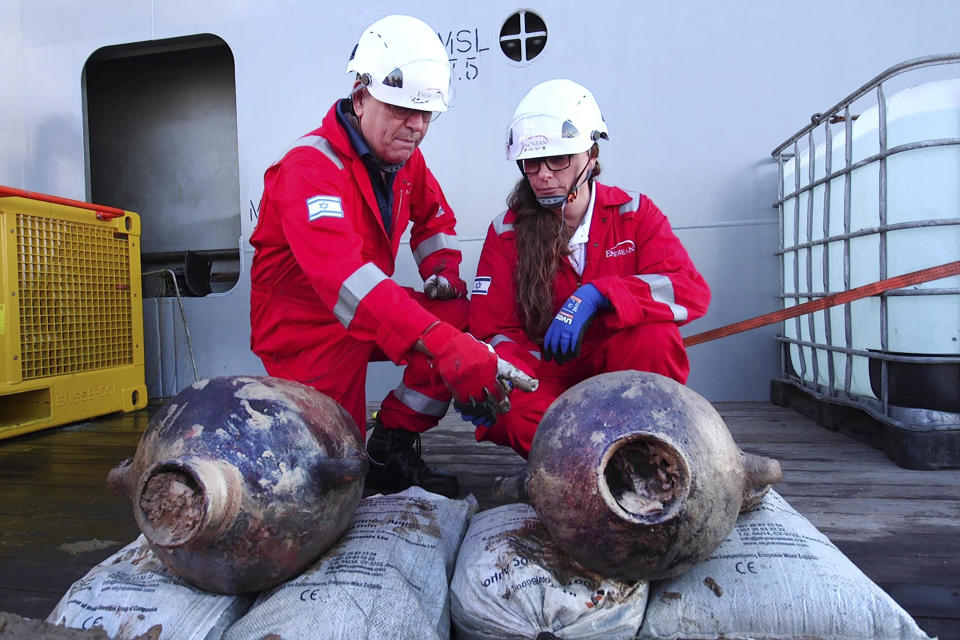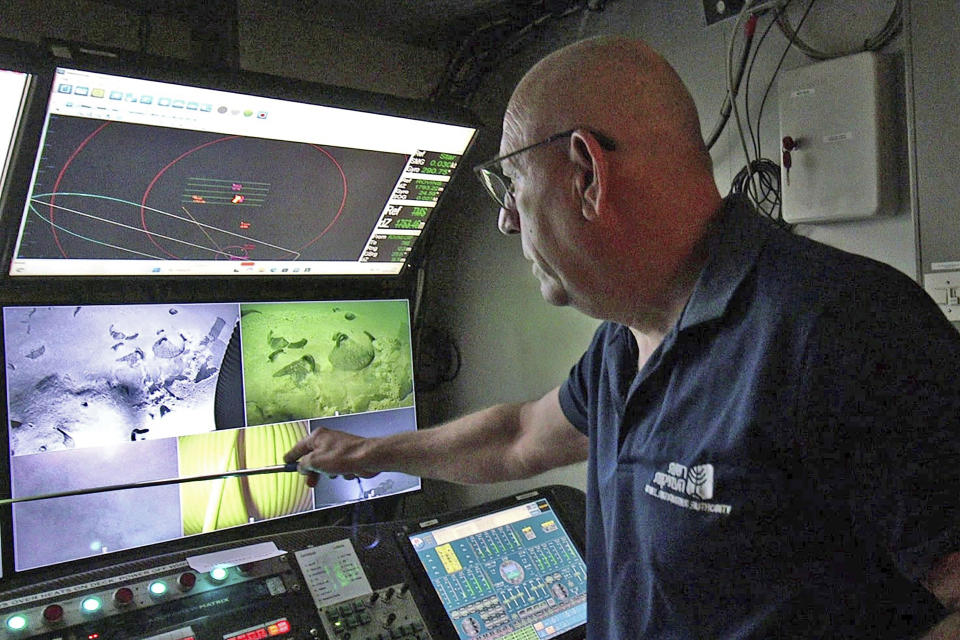London — A routine oil and gas survey by an energy company discovered cargo from the remains of what archaeologists believe to be the oldest and deepest shipwreck already discovered in the Mediterranean Sea.
Israeli archaeologists he said they recovered intact storage jars believed to be 3,300 years old from the wreckage. The amphorae, as the large jars are known, were captured by cameras on robotic submersibles used by the company Energean during the research, the scientists said.
The submersibles were tasked with searching for possible energy sources off the coast of Israel.
The amphorae were spotted on the seabed, about 90 kilometers off the coast of Israel, at a remarkable depth of more than 1,600 meters.

Experts from the Israel Antiquities Authority said the shipwreck appeared to be the “first and oldest” in the region.
Jacob Sharvit, who heads the IAA’s maritime unit, told CBS News partner network BBC News The discovery suggested that sailors at the time used celestial navigation to traverse the deep and remote parts of the sea, relying on the sun and stars to determine their physical location.
From the place where the wreck was discovered, Jacob said that “only the horizon is visible around”, so navigators could not rely on landmarks to find their way.
“To navigate, they likely used the celestial bodies, obtaining sightings and angles of the Sun and star positions,” he said.
Experts said the ship was likely sunk in a storm or an “encounter with pirates.”
Karnit Bahartan, Energean’s top environmental official, told the BBC that cameras on the company’s submersibles found what initially appeared to be a “large pile of jars piled up on the seabed.”


Only two of the vials were brought to the surface, a process that required special equipment to avoid damaging them or any other artifacts around them. The jars, believed to have belonged to the ancient Canaanite people of the Middle East who lived along the eastern Mediterranean coast, will be displayed this summer at Jerusalem’s Israel National Archeology Campus.
The IAA said the sunken ship, buried beneath the muddy seabed with hundreds of jars piled on top, appeared to be between 39 and 45 feet long. He said both the boat and its cargo appeared to be completely intact.
Describing it as a “truly sensational discovery”, Bahartan said the other two shipwrecks found with cargo in the Mediterranean were dated to the late Bronze Age – hundreds of years after the one containing the amphorae likely sank, and much further north , near the coast of Turkey. .
Bahartan said that based on the locations and depths of previously discovered shipwrecks, “the academic assumption until now has been that commerce at that time was carried out by flying safely from port to port, hugging the coast with visual contact.”
“The discovery of this boat now changes our entire understanding of the ancient skills of sailors,” she said.
Former acting CIA director warns that US faces serious threat of terrorist attack
Sneak peek: Jade Janks and the secret photos
MLB to honor Willie Mays, Negro Leagues in special game at Alabama’s Rickwood Field































